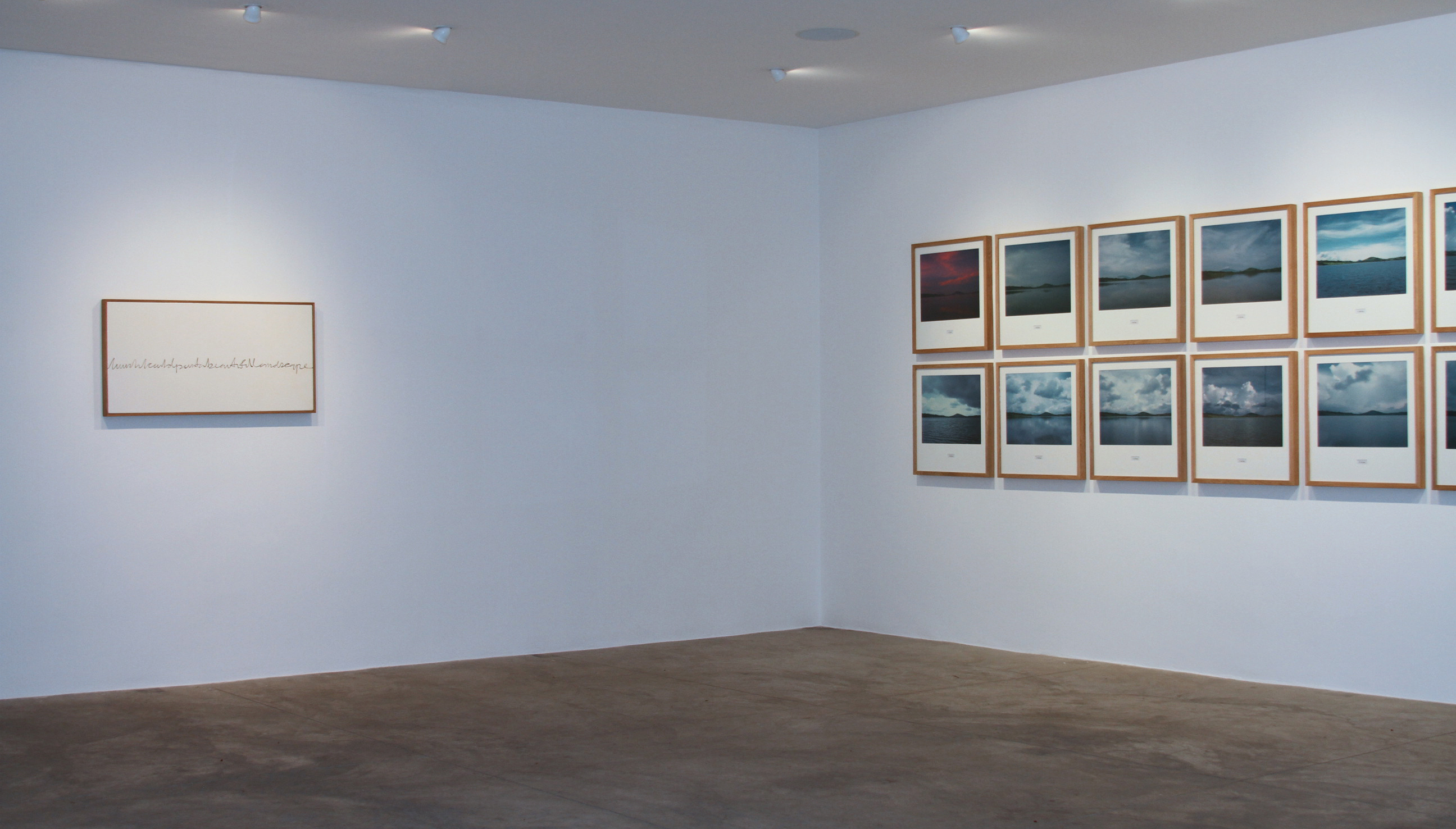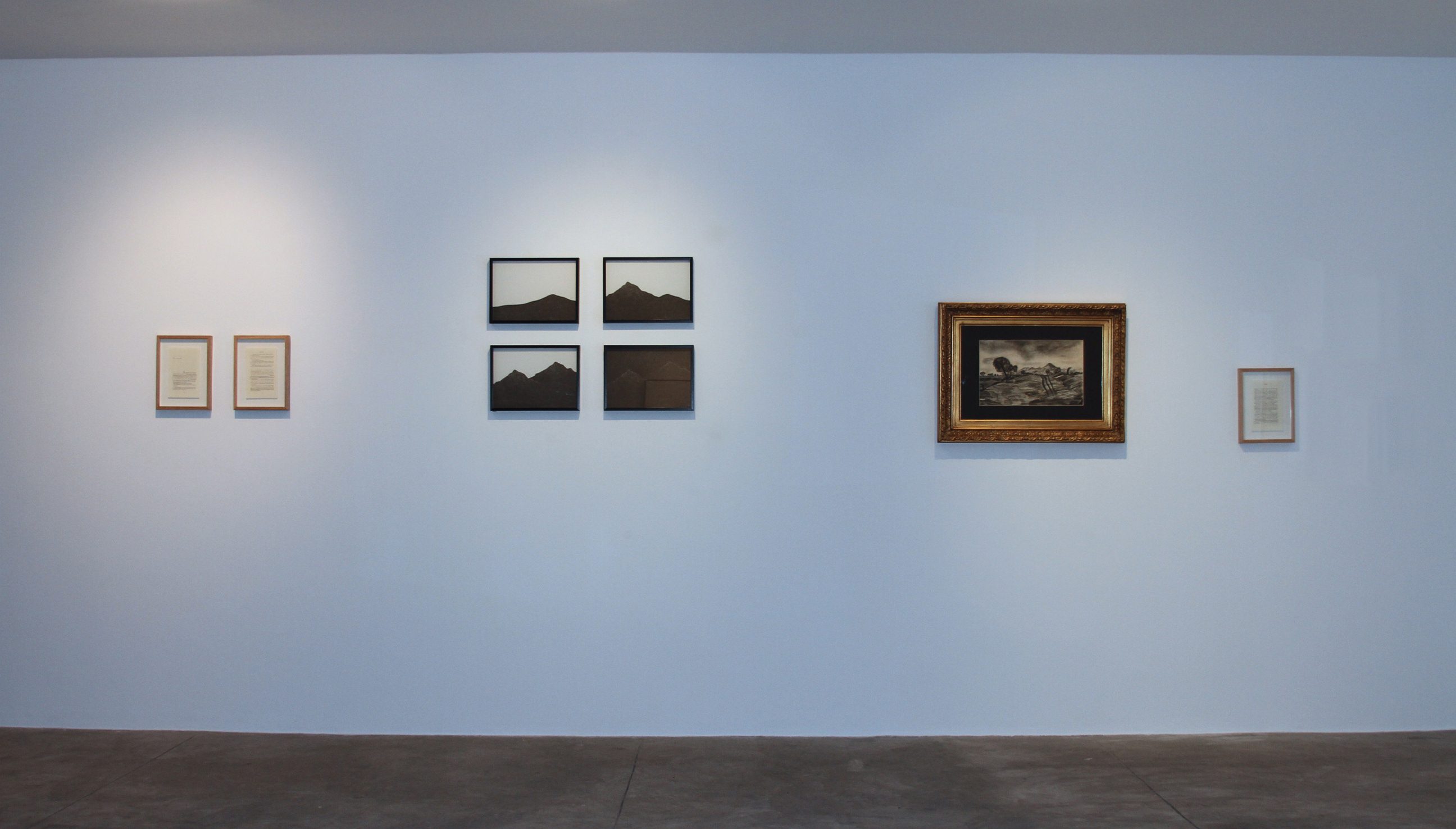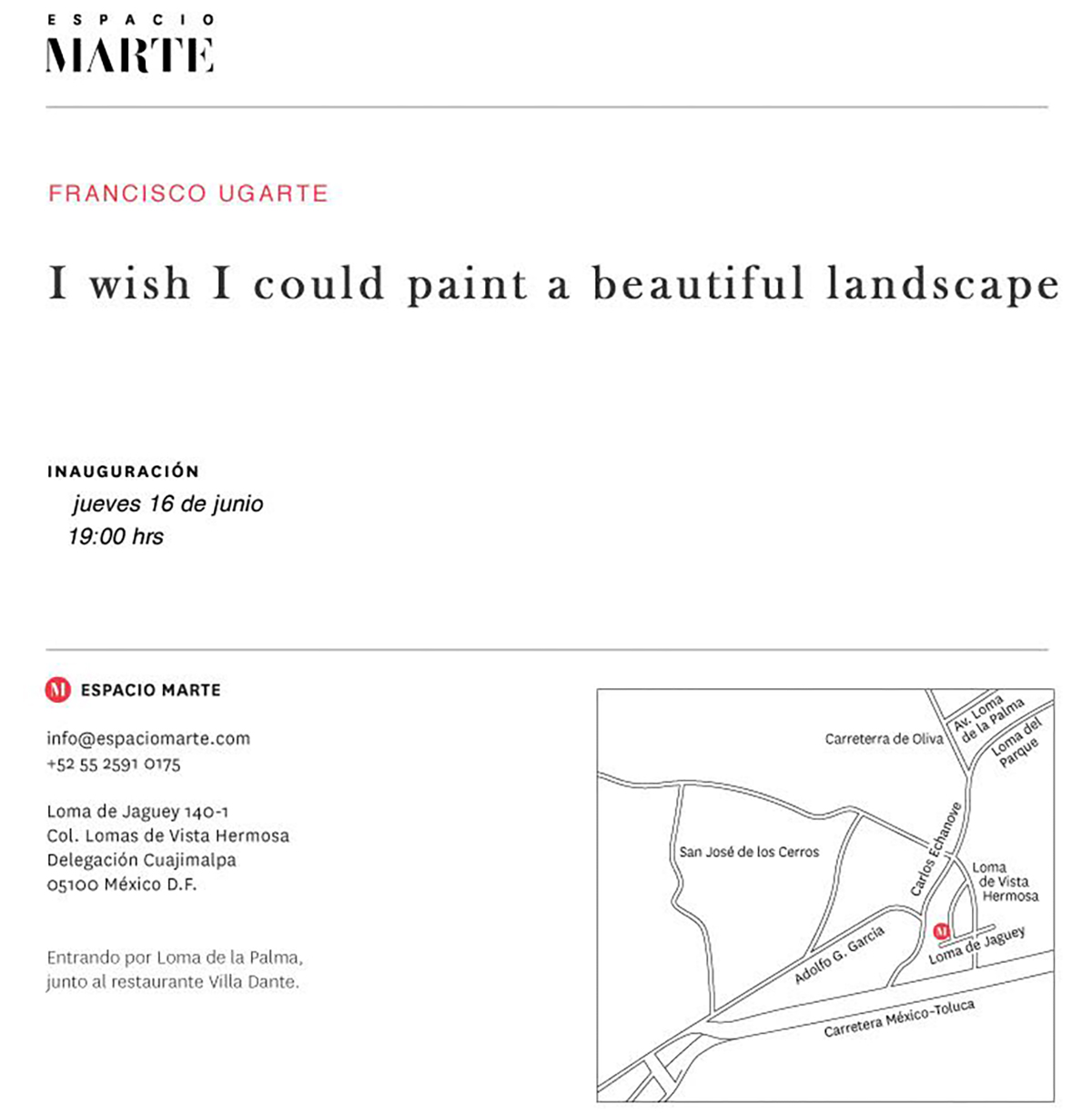I wish I could paint a beautiful landscape
Espacio Marte, Mexico City, Mex.
Exhibition text-
I WISH I COULD PAINT A BEAUTIFUL LANDSCAPE
“The jungle grows only by means of its own negation – art does the same.” Robert Smithson.
Francisco Ugarte (Guadalajara, Mexico, 1973) has painted a beautiful landscape by affirming and communicating his incapability for doing so. Truly paradoxical, but the admittance of such limitation significantly expanded his field of action, granting him the possibility of experimenting and reflecting in regards to the existential and esthetical phenomena which have been of the essence in art history, philosophical thinking and literary creation: the landscape.
The current exhibition gathers a set of works that under different techniques, support platforms and disciplines, inquire the formal and conceptual aspects of this genre from a contemporary perspective. On the first place, it is unavoidable -due to its magnetic chromatic composition- the piece titled 8 de agosto (2008). There, in those photographic series whose quadrangular format submits to a slide, we sequentially view the metamorphosis of the same landscape during different moments of the day. Nothing more elemental or quotidian than this; and nevertheless, fascinating in the widest possible sense of this term. The changes in luminosity, the water’s textures and the reflections on its surface, the shades and the volumes of the clouds among other meteors, offer a “strange” spectacle for the urbanite. Concerning this, it is curious to remember that since 1767, the philosopher Denis Diderot established that the inhabitants of the metropolis hung landscapes on their halls’ walls to compensate the loss of nature.
Furthermore, we find nine images of Terregal (2011,) a video recording the ephemeral pass of a cloud of dust. Here, as in the rest of his landscape-related works, Ugarte sets us on a fixed spot: the same place where he focused his view without altering time or using any technological effect. The dust then seems to occupy the interior of the frame itself, being there, still suspended. At the distance, equally as in the polysemic piece titled Conciliabulo, we perceive the only trace of human presence in the works shown in this exhibition: a small, precarious rural cabin. In addition, the photograph titled Nube (2009) stands out, specially due to the delicate wink that this piece establishes with the famous oil painting Cloud study (1832) by Johan Christian Dahl, the father of the Norwegian Romantic painting.
To conclude, it is worth to underline that in this exhibition, Ugarte interweaves a suggestive visual and intellectual dialogue with two figures of the Mexican culture, and more specifically of Jalisco: Juan Rulfo and Gerardo Murillo -Dr. Atl-. Thus, the presence of these three characters: Atl, Ugarte and Rulfo unleashes uncountable interpretations, landscape connections and conceptual riddles, which are natural to contemporary art.
Victor Palacios.






